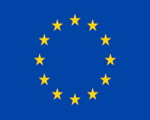 As various articles on this blog (Search: EU) have demonstrated over the past couple of years, the EU has been more proactive than the U.S. in targeting potential health and environmental risks posed to consumers by nanomaterials and seeking to generate and compile relevant and helpful information with an eye toward appropriate regulation. The EU scientific panel is now calling for comments on opinions of the EU Scientific Committee on Consumer Safety (SCCS) on several nanosubstances used as sunscreens in cosmetics.
As various articles on this blog (Search: EU) have demonstrated over the past couple of years, the EU has been more proactive than the U.S. in targeting potential health and environmental risks posed to consumers by nanomaterials and seeking to generate and compile relevant and helpful information with an eye toward appropriate regulation. The EU scientific panel is now calling for comments on opinions of the EU Scientific Committee on Consumer Safety (SCCS) on several nanosubstances used as sunscreens in cosmetics.
The opinions posted for comment indicate what is known about these substances and point to the gaps in the studies. For example, with regard to dermal absorption of titanium dioxide nanoparticles, SCCS states, in part:
“[T]here is a body of open literature on this subject. The evidence from these studies supports the conclusion that TiO2 nanoparticles are unlikely to penetrate across the skin to reach viable cells of the epidermis. . . . Studies have also shown that TiO2 nanoparticles do not penetrate the (simulated) sunburnt skin.
– Despite the extensive database showing a general lack of TiO2 nanoparticle absorption via the dermal route, there are a few gaps in the knowledge. For example, it is not clear whether TiO2 nanoparticles will be able to penetrate through cuts and bruises, or over repeated or long term applications of a sunscreen formulation.
– A number of studies have indicated that TiO2 nanoparticle can enter the hair follicles and sweat glands, and that they may remain there for a number of days. This is a scenarioin which TiO2 nanoparticles are likely to get and remain in a close proximity to the living cells for a length of time. A photocatalytic nanoparticle in such a situation may cause . . . potential harmful effects when exposed to sunlight. . . . [M]ore data would be needed to justify the use of those TiO2 nanoparticles in skin applications that have a considerablelevel of photocatalytic activity.” (Scientific Committee on Consumer Safety SCCS,Opinion on Titanium Dioxide (nano form), p. 97)
The document also indicates the need for study of the potential of these substances of the nano-related properties of the substances to be mutagenic or genotoxic. (p. 97-98)
These few small examples of the more extensive information contained in the opinions gives a sense of where the SCCS’s attention is currently on nanosubstances in cosmetics, which is one of the most pervasive uses of nanosubstances in consumer use. With study of such materials moving along in laboratories around the world, it is essential that the information be collected and evaluated to determine what risks, if any, may be presented to consumers by the nanoscale properties of the substances. The EU is moving in the right direction.
All of the SCCS opinions are available at



 It’s been a long time coming, but the European Commission published its definition of nanomaterials on October 18, 2011. Though not binding on EU member countries, this is a major step toward the use of a uniform definition throughout the EU and – who knows? – elsewhere in the world. The Commission adopted the following previously recommended definition of “nanomaterial”:
It’s been a long time coming, but the European Commission published its definition of nanomaterials on October 18, 2011. Though not binding on EU member countries, this is a major step toward the use of a uniform definition throughout the EU and – who knows? – elsewhere in the world. The Commission adopted the following previously recommended definition of “nanomaterial”:
 On November 22, 2010, EPA submitted a proposed rule under Section 8(a) of TSCA to the Office of Management and Budget for its review. The proposed rule includes reporting requirements for manufacturers of nanoscale materials and could be published in the Federal Register for public comment in December.
On November 22, 2010, EPA submitted a proposed rule under Section 8(a) of TSCA to the Office of Management and Budget for its review. The proposed rule includes reporting requirements for manufacturers of nanoscale materials and could be published in the Federal Register for public comment in December.

